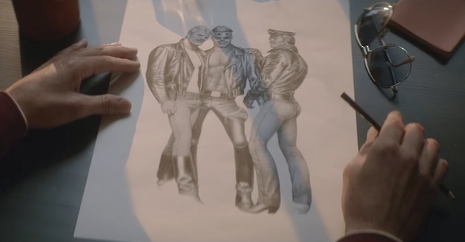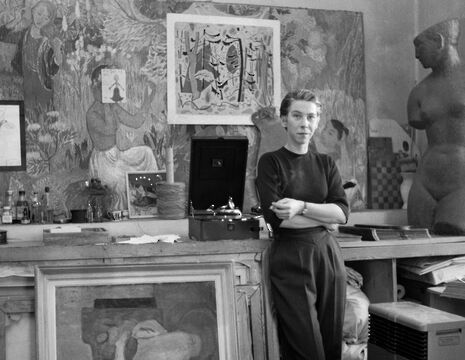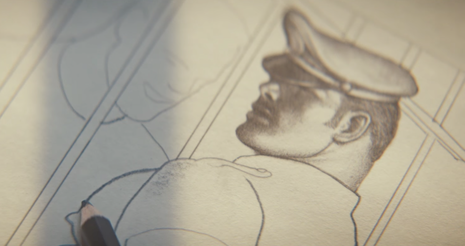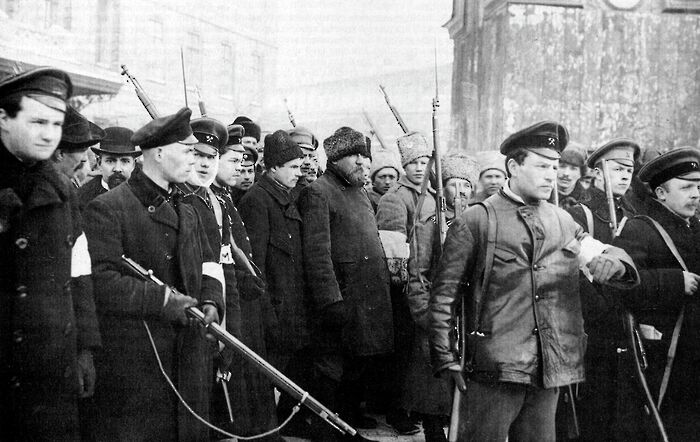Finnish Independence: When Tove met Tom
On the centenary of Finnish independance, Anna Hollingsworth takes a look at her homeland’s cultural icons, and their unexpected similarities

There was a time when all the cards I posted from home in Finland were carried off by Moomin stamps: from Moominpappa typing up his memoirs to Snorkmaiden fixing her fringe, I felt like my mail carried an extra dose of cuteness and goodwill to the world. But one day, a Finnish card appeared in my pigeonhole with a different kind of aesthetic: in the top right corner, a face with a thick moustache and a strong jawline peered at me from between a man’s muscular thighs, partly masked by his bottom – and a very perk one at that.
That was in 2014, and the Finnish Post had just launched a set of stamps celebrating the art of Tom of Finland, to accompany those with Tove Jansson’s Moomin sketches, long established as a national symbol. Now, three years later, Finland is celebrating its 100th anniversary of independence with an increased attention to its national 'brand' abroad. Where in the past the focus was on the once-glorious Nokia phones, minimalist Nordic design, education, and the recurring BBC piece on baby boxes and social welfare, now most international media attention goes to the unlikely pair of Tom and Tove.
Tom of Finland was the pen name of Touko Laaksonen, the Finnish artist who revolutionalised the homoerotic aesthetic of the second half of the 20th century and served as the inspiration for the likes of Freddy Mercury and the Village People. Advertising agency illustrator by day, freelance artist at night, Laaksonen introduced sailors, bikers, lumberjacks, and policemen into the gay fantasy canon. Much of his initial inspiration drew on his time in the army during the second world war, where there was no shortage of men in uniforms; although deeply disgusted by the Nazi ideology, Laaksonen later admitted to ranking the Germans as by far the sexiest in the trenches.

It’s not hard to see these origins reflected in his work: just as the leather clothing of the characters is bulging with muscle and male anatomy, the sketches bulge with a macho masculinity that had been largely absent from homoerotic art until then. It’s perky bums galore, whips and batons, manly men getting at it while rafting on logs, on breaks from construction work, or while a policeman stops a biker for inspection – in all senses of the word.
It was the same war – albeit not as much in the way of uniforms – that drove Jansson to write and illustrate the first Moomin book, The Moomins and the Great Flood. She felt the need to write something where everything would have a happy ending (not in the Tom of Finland sense of the word, mind you): in the novel, Moominpappa has gone missing, and his family – a tribe of large-snouted, round, hippo-like characters – go on an adventure to find him and encounter loss, sorrow and danger on the way, reflecting the war-time atmosphere, but in the end find hope of a brighter future. It was also the start of Jansson’s personal happy ending, marking the beginnings of international fame and a Moomin empire ranging from a comic strip in London-based Evening News to themed weddings for Japanese couples making the trek to Moominland in the coastal town of Naantali.
But there is more of a link between the butch bikers and tender trolls than their origins in war – after all, which artist living through a war would not be affected by it? Both Jansson and Laaksonen encoded their anti-authority stances in their art. Given that homosexuality was decriminalised in Finland only in 1971, it is hardly surprising that neither Laaksonen nor his sketches were out loud and proud. After gaining popularity in Physique Pictorial, an American gay proto-porn magazine, his work was initially spread through an underground network of fans on both sides of the Atlantic. The sketches not only defied authority by virtue of the illegality of their subject matter, the uniform-rife imagery provided a hotbed for ridiculing the authority that wore it. A recurring theme in the sketches is how to, quite literally, fuck the police.

Later, Laaksonen’s work would feature in exhibitions in the US, but his own homosexuality remained a secret to even his family, apart from his sister, who actively discouraged him from coming out. His alter ego as Tom of Finland was revealed only after his death in 1991. In an interview, his nephew reveals how they knew that Uncle Touko spent his winters in California drawing calendars – but no one thought to ask what kinds of calendars they were.
Where Tom of Finland isn’t particularly subtle about erecting its rebellion, Jansson incorporated her own defiance into the Moomins in more hidden ways. Nevertheless, she, too, risked breaking the law with references to gay relationships. Thingumy and Bob, timid little creatures holding hands and speaking a language undecipherable to others, are based on Jansson herself and her former partner, Vivica Bandler. With them, they carry a red ruby tucked away in a suitcase: a powerful metaphor for forbidden love. The lighthouse keeper Too-ticky, on the other hand, is a portrait of Jansson’s later partner for life, Tuutikki Pietilä. Beyond portraying her own fordibben relationships, Jansson was also a critic of war: Comet in Moominland, where the inhabitants of Moomin Valley flee their homes to escape a fast-approaching comet, serves as an allegory for the atom bombs in Hiroshima and Nagasaki.
Ultimately, though, as much as Laaksonen and Jansson rejected authority, their work is equally about advocating tolerance and inclusiveness. The Tom of Finland sketches mainstreamed ideas of sexuality and masculinity that until then had been very much outré, and served as a platform for many gay men in the 60s and 70s to feel more comfortable with them. Laaksonen also advocated inter-racial relationships, at the time still as condemned as same-sex ones. In his work, men of all skin colours are equal, with all men equally desirable and fetishised, and no tops or bottoms based on race.
Jansson, in turn, advocated for tolerance from a feminist perspective. The Groak – a terrifying being with a chilly aura and who freezes everything under her feet – would traditionally be cast as a male character, while the outspoken Little My has become a synonym for feminism. Beyond strong women, there is also an ethos of accepting anyone and everyone in more general: in The Invisible Child, Ninni, a human girl, is invisible because of past traumas – an allegory for children in children’s homes – but becomes visible after the Moomin family takes her under their wings. Even the Groak is not judged despite her freezing Moominmamma’s precious flowers: rather, the Moomins treat her with respect, feeling mainly sadness for the creature’s lonely existence.
It is not difficult to see why the Moomins and Tom of Finland’s men are gathering such a following today, even if they are not the most obvious choice for national branding. The world is calling for tolerance and rebellion more than ever, and that is why art questioning authority and advocating equality is bound to spark an interest, whether in the form of trolls or leather-clad policemen. There is something, literally, cheeky and oddly satisfying about licking a man’s bum on a stamp, sticking it to an envelope and posting it to anti-gay Russia. Through their work, Tove and Tom allow us to go to arms still today
 News / Eight Cambridge researchers awarded €17m in ERC research grants27 December 2025
News / Eight Cambridge researchers awarded €17m in ERC research grants27 December 2025 News / Downing investigates ‘mysterious’ underground burial vault 29 December 2025
News / Downing investigates ‘mysterious’ underground burial vault 29 December 2025 News / News in Brief: carols, card games, and canine calamities28 December 2025
News / News in Brief: carols, card games, and canine calamities28 December 2025 Sport / Hard work, heartbreak and hope: international gymnast Maddie Marshall’s journey 29 December 2025
Sport / Hard work, heartbreak and hope: international gymnast Maddie Marshall’s journey 29 December 2025 Interviews / Meet Juan Michel, Cambridge’s multilingual musician29 December 2025
Interviews / Meet Juan Michel, Cambridge’s multilingual musician29 December 2025







